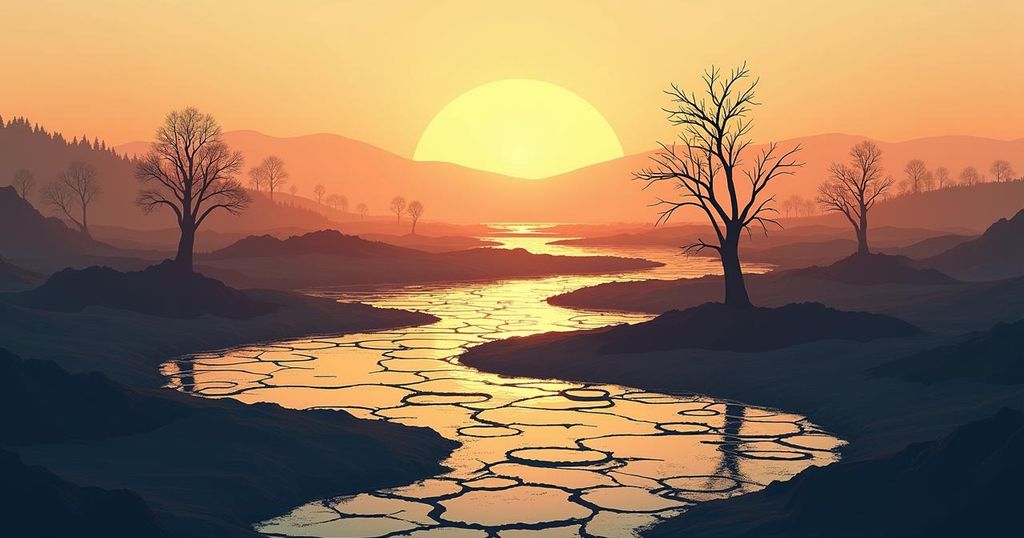The year 2023 has been declared the driest year for the world’s rivers in over thirty years, linked to unprecedented global temperatures and droughts. Approximately 3.6 billion people lack reliable water access, a number expected to grow to 5 billion by 2050. Drought conditions have severely impacted many regions, including the Amazon and Lake Titicaca, complicating logistics and food security.
The year 2023 bears the unfortunate distinction of being the hottest year on record, leading to a dramatic decline in the world’s river flows. According to the World Meteorological Organization (WMO), this situation marks the driest year for rivers seen in over three decades. These critical water bodies suffered from prolonged drought conditions in various regions, exacerbated by the record high temperatures that influenced global weather patterns. Furthermore, the WMO has reported a significant loss of glacier mass—an essential source of fresh water—that is expected to threaten water security for millions in the years to come. During a press briefing in Geneva, Switzerland, WMO Secretary-General Celeste Saulo emphasized the critical role of water in assessing climate change, stating, “Water is the canary in the coal mine of climate change.” Saulo noted that rising temperatures render the hydrological cycle increasingly erratic, resulting in unpredictable occurrences of both droughts and floods. The State of Global Water Resources 2023 report, which evaluates various water bodies including lakes, reservoirs, and glaciers, has identified that approximately 3.6 billion people currently lack reliable access to water for at least one month annually, a figure projected to rise to 5 billion by the year 2050. The report highlighted regions such as the southern United States, Central America, and parts of South America—including Argentina, Brazil, Peru, and Uruguay—that have experienced unprecedented drought conditions, particularly noting record-low water levels in the Amazon and Lake Titicaca. This dire water scarcity has also affected river navigation, particularly in Brazil, and has contributed to a growing food crisis in southern Africa. With data for 2024 still pending, Stefan Uhlenbrook, the WMO’s director of hydrology, anticipates that the extreme summer conditions will likely lead to continued low river flows worldwide.
The 2023 drought represents a critical moment in the context of global climate change, with the World Meteorological Organization providing vital data regarding water resource conditions. As climate change exacerbates weather variability, the consequences are profoundly felt in the form of severe droughts and floods. Glaciers, a critical water source that feeds rivers, have been reported to be diminishing at unprecedented rates, raising concerns over future water availability. Immediate action and improved data management are required to address the global water crisis, especially as the number of individuals lacking adequate water access is predicted to increase drastically in the coming decades.
In summary, the year 2023 has proven to be exceptionally challenging regarding global water resources, with rivers facing unprecedented drought conditions and glacier loss threatening water security. The WMO has underscored the urgency of addressing these issues as climate change continues to impact weather patterns around the globe. Strategic improvements in data sharing and resource management are essential to create adaptive responses to the looming water scarcity crisis.
Original Source: apnews.com






